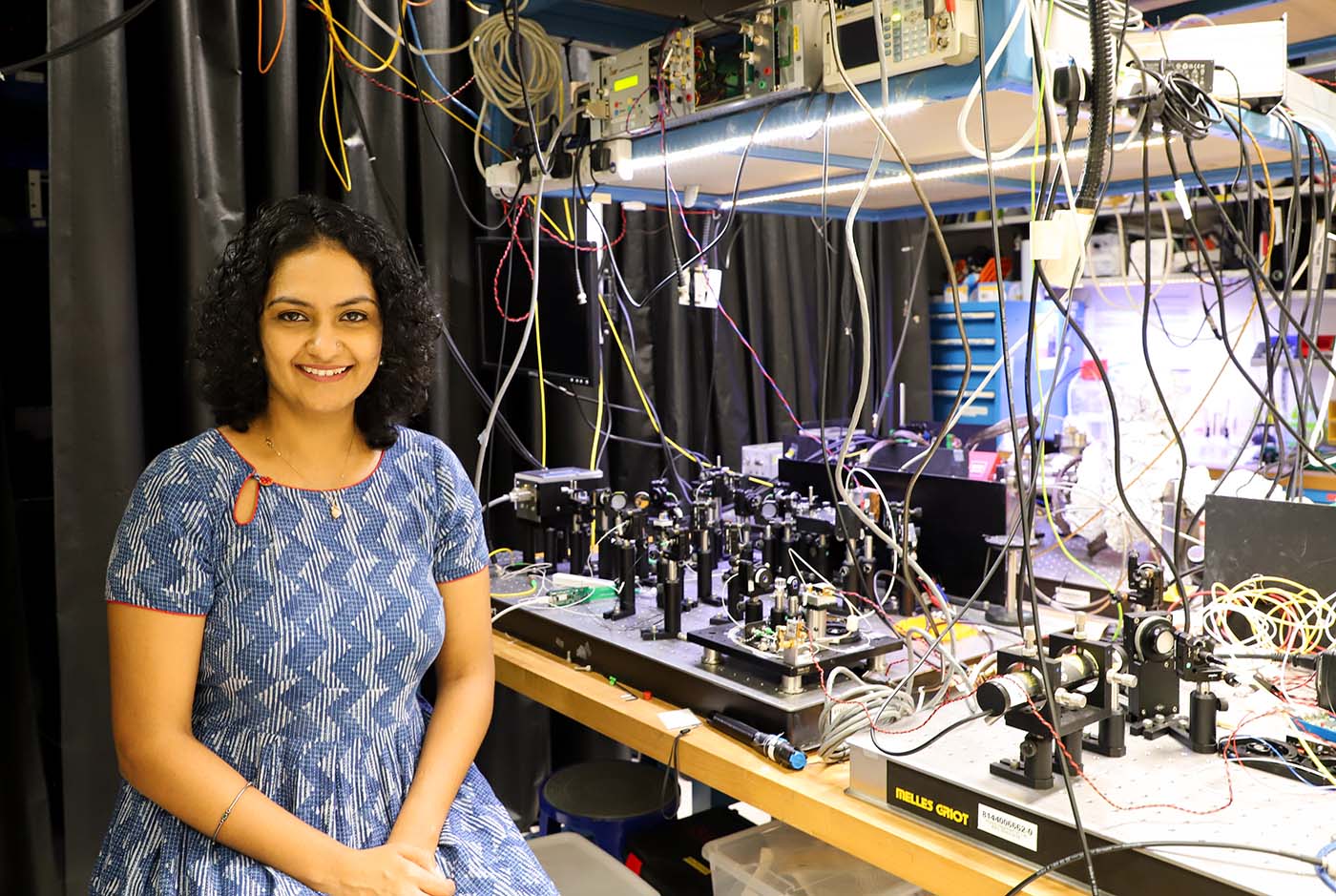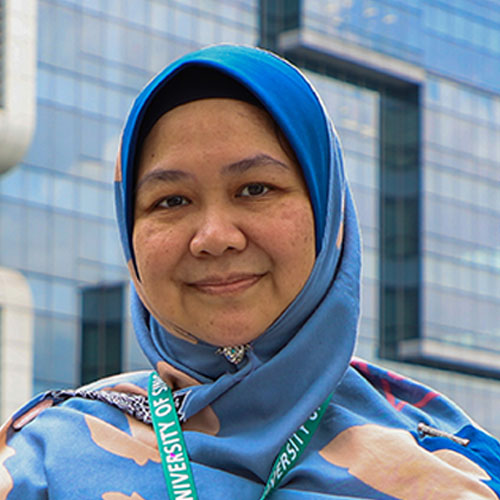Highlights
Meet a CQTian: Vindhiya Prakash
 CQT Research Fellow Vindhiya Prakash is working on single atom traps to study light-matter interactions for applications in quantum information processing and networking.
CQT Research Fellow Vindhiya Prakash is working on single atom traps to study light-matter interactions for applications in quantum information processing and networking.
Who are you and how did you come to be at CQT?
I’m Vindhiya Prakash. I come from India. Right now, I work as a Research Fellow in Christian Kurtsiefer’s group. I first came to CQT as an undergraduate at NUS majoring in physics. In 2011, I joined former Principal Investigator Björn Hessmo’s lab for a summer project during my third year and for my Final Year Project (FYP).
How did that experience impact you?
The summer project was my very first experience with quantum and lab work. It was so fascinating to see all the equipment. As the lab was just starting up, there was a lot of opportunity to build things. I learnt the basics of optics and working with lasers. I remember being very scared to turn on the laser. One day, Björn realised this. He came and stood next to me and said, “Press the button, it’s okay, nothing will happen.”
The team was working on a project about using evanescent fields from very narrow waveguides to do cold atom trapping. While working with the team, I realised that I like experimental work and being in small groups where I can make an impact.
Did you know then that you wanted to continue pursuing physics research?
At the end of my FYP, I hadn’t quite made up my mind. To give myself time, I continued on as a Research Assistant in the lab and did a part-time Master of Science by Research. In the lab, I saw how one of the group’s PhD students had built an entire experiment almost on his own. I also felt that he learnt a lot building it, from electronics to mechanical engineering design. I decided I wanted to learn too and experience that sense of ownership from building your own experiment. So, I went abroad and did my PhD in Barcelona at the ICFO - The Institute of Photonic Sciences in the group of Professor Morgan Mitchell. It was good to change my environment and gain exposure to different techniques people use.
How did you find yourself back in Singapore and CQT?
During my PhD we built an experiment to study quantum light-matter interactions. Our goal was to explore novel phenomena arising from interfacing a single trapped atom with quantum states of light such as single photon Fock states or entangled states tailored to the atom’s transitions. Typically, the strength of light-matter interaction in free space is very low. While it is useful for applications in quantum computation to enhance this interaction strength by placing the atom in a cavity, this strongly modifies the system. There is plenty of physics to be explored in free space systems and that was what we were interested in. Christian’s group is a pioneer on free space neutral atom probing and we drew a lot of inspiration for our atom trap design from their set-up. So coming to Christian’s group after my PhD was a natural continuation for me scientifically. It also aligned with my desire to move back to familiar terrain closer to home.
What are you working on now?
I’m working on single atom traps to study light-matter interactions for applications in quantum information processing and networking. We have two kinds of systems, one with a cavity around the atom and another without mirrors, using lenses instead so the light focuses tightly on the atom. I’m also helping out on another project where we use a cloud of atoms to generate correlated photons through nonlinear interaction.
What is your favourite aspect of research?
I like thinking about what we expect to see when we implement a certain experimental scheme. The other thing that is really interesting, and really frustrating, is when you see something you don’t expect that you now must explain. I also enjoy learning something new regularly.
It’s the nature of research.
Yes, it’s not a linear process. It is very easy to be engulfed by curiosity. You can get breakthroughs, and you find out many interesting things along the way. On the other hand, you could invest a lot of time and resources to finding the answer for a question but not necessarily get an outcome. At some point, you may need to make a tough decision to stop and put aside the problem.
What do you enjoy outside of work?
I try to keep fit by going to the gym, running or swimming. It helps keep my mind sharp. Singing Indian classical music gives me a lot of fulfillment and happiness. Recently, I’ve also joined some clubs at NUS to do inline skating and kayaking, which are really fun. When I was in Europe, I discovered my love for hiking and exploring nature. That has taken a backseat since returning here, but I’ve been to Thailand to hike, and I also want to go to Kota Kinabalu.
 Vindhiya hiking at Mount Etna, an active volcano in Italy, in June 2023.
Vindhiya hiking at Mount Etna, an active volcano in Italy, in June 2023.
Learn more
Related Stories
 | Meet a CQTian: Wee Wen Jun March 16 2023 |
 | Meet a CQTian: Mashitah Bte Mohammad Moasi April 11 2023 |






